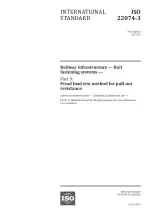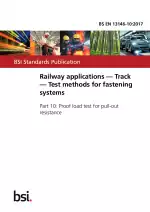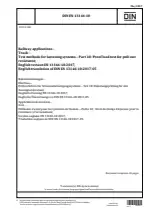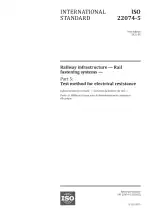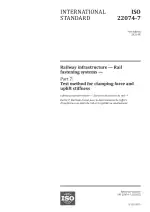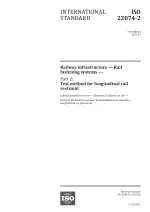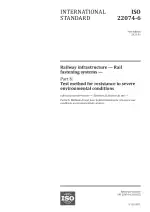Railway Infrastructure - Rail Fastening Systems - Part 3: Proof Load Test Method for Pull-Out Resistance
Also Known As:
The ISO 22074-3:2021 standard provides a test method to determine the resistance of rail fastening assemblies to pull-out forces. The purpose of this test is to ensure that the force required to detach the rail fastening assembly from its supporting element, such as a sleeper, exceeds a specified value.
The standard covers three types of components within the rail fastening system. First, it includes components that are cast into concrete during the manufacturing process of sleepers or other supporting elements. Second, it encompasses components that are glued into drilled holes or into cast holes in concrete. Finally, it addresses components that are affixed to sleepers or other supporting elements made of wood, polymeric composite, or steel using screws or other attachment methods.
It is important to note that this test method does not apply to embedded rails. The standard provides a clear and systematic procedure for conducting the proof load test, ensuring consistency and accuracy in assessing the pull-out resistance of rail fastening systems. Compliance with this standard helps to ensure the reliable and safe operation of railway infrastructure by verifying the integrity and stability of rail fastening assemblies.
| Edition | 1 |
| ICS Codes | 45.080 - Rails and railway components |
| Language(s) | English |
| File Size | 1.0 MB |

